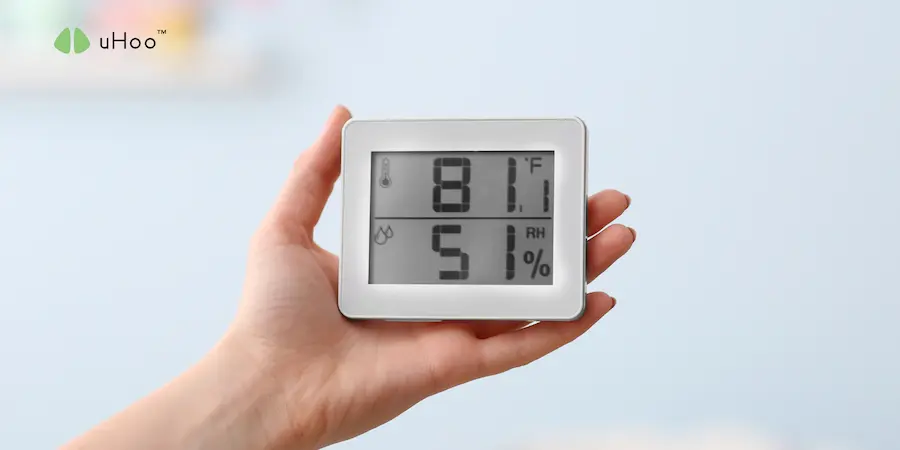We’re here to tell you one thing today: achieving the perfect humidity level in your indoor environment is not merely about comfort. It’s a foundational element for truly pure indoor air.
The Critical Role of Humidity in IAQ
Humidity, or the amount of water vapor present in the air, acts as a crucial moderator for various indoor air quality factors. Its influence is a delicate equilibrium:
When Humidity is Too High (Above 60% Relative Humidity):
- Mold and Mildew Proliferation: This is perhaps the most significant concern. High humidity provides the ideal breeding ground for mold and mildew, which release microscopic spores into the air. These spores are potent allergens and irritants, capable of triggering respiratory issues, asthma attacks, allergic reactions, and even more severe health problems for sensitive individuals.
- Dust Mite Infestation: Dust mites, common microscopic creatures and a major source of allergens, thrive in high humidity. Reducing humidity significantly curtails their population.
- Bacterial and Viral Growth: Certain bacteria and viruses can also flourish in overly moist conditions, potentially increasing the risk of airborne illness transmission.
- Off-Gassing: Elevated humidity can sometimes exacerbate the off-gassing of volatile organic compounds (VOCs) from building materials, furniture, and cleaning products.
- Structural Damage: Beyond air quality, sustained high humidity can lead to condensation, peeling paint, warped wood, and structural damage to your home.
When Humidity is Too Low (Below 30% Relative Humidity):
- Respiratory Irritation: Dry air can irritate and dry out the mucous membranes in your nose and throat, making them less effective at trapping airborne particles, bacteria, and viruses. This leaves you more susceptible to colds, flu, and other respiratory infections.
- Increased Particle Dispersion: In very dry air, smaller particles like dust and allergens can remain suspended for longer periods, as there isn’t enough moisture to weigh them down.
- Dry Skin and Eyes: Low humidity directly impacts personal comfort, leading to dry, itchy skin, chapped lips, and irritated eyes.
- Static Electricity: An annoying, yet harmless, indicator of excessively dry air.
- Damage to Belongings: Wood furniture, musical instruments, and electronic equipment can suffer damage, cracking, or malfunction due to overly dry conditions.
The Ideal Humidity Level: Between 40% and 60% Relative Humidity
The consensus among health and building experts is that maintaining an indoor relative humidity level between 40% and 60% strikes the optimal balance for health, comfort, and the longevity of your home. In this ideal range:
- The growth of mold, mildew, and dust mites is significantly inhibited.
- Your respiratory system remains moist and effective at filtering pollutants.
- The airborne survival of many viruses is reduced.
- Overall comfort is maximized, leading to better sleep and concentration.
Achieving and Maintaining the Perfect Moisture Balance
Perfecting your indoor humidity level requires a proactive approach and a bit of environmental awareness:
- Monitor Consistently: The first step is always to know your current humidity levels. A good hygrometer is essential.
- Ventilate Effectively: Use exhaust fans in bathrooms and kitchens to remove excess moisture during and after activities that generate steam. Regular fresh air exchange (when outdoor air quality allows) also helps balance humidity.
- Control Sources of Moisture: Promptly fix any leaks in plumbing, roofs, or foundations. Ensure proper drainage around your home. Avoid overwatering indoor plants.
- Use Dehumidifiers: In naturally humid climates or during damp seasons, a dehumidifier can effectively extract excess moisture from the air, preventing conditions favorable for mold and dust mites.
- Employ Humidifiers: During dry seasons (often winter), a humidifier can add necessary moisture back into the air, preventing dryness-related health issues and protecting your home’s integrity. Remember to clean humidifiers regularly to prevent the dispersal of mineral dust or bacteria.
How uHoo Helps You Master Your Moisture Balance
Taking the guesswork out of humidity management is where a smart air quality monitor truly shines. The uHoo air quality monitor offers real-time, precise readings of your indoor humidity levels, alongside other crucial air quality parameters. With uHoo, you can:
- Instantly see if your humidity level is too high or too low at a glance, both at home and when you’re away.
- Receive intelligent alerts when humidity levels stray outside your preferred healthy range, prompting you to take immediate action.
- Track historical data to identify patterns and understand how seasonal changes or daily activities impact your home’s moisture balance, allowing for long-term optimization.
By providing clear, actionable insights into your indoor humidity, uHoo empowers you to achieve and maintain that perfect moisture balance, ensuring the air you breathe is as pure and healthy as possible.



